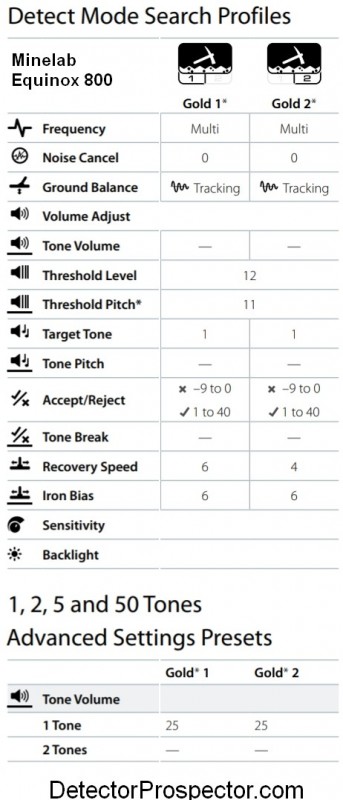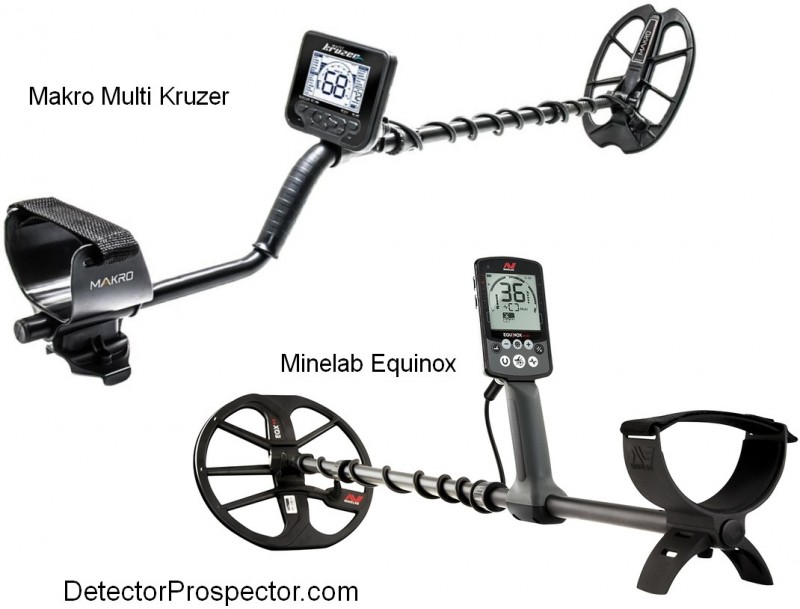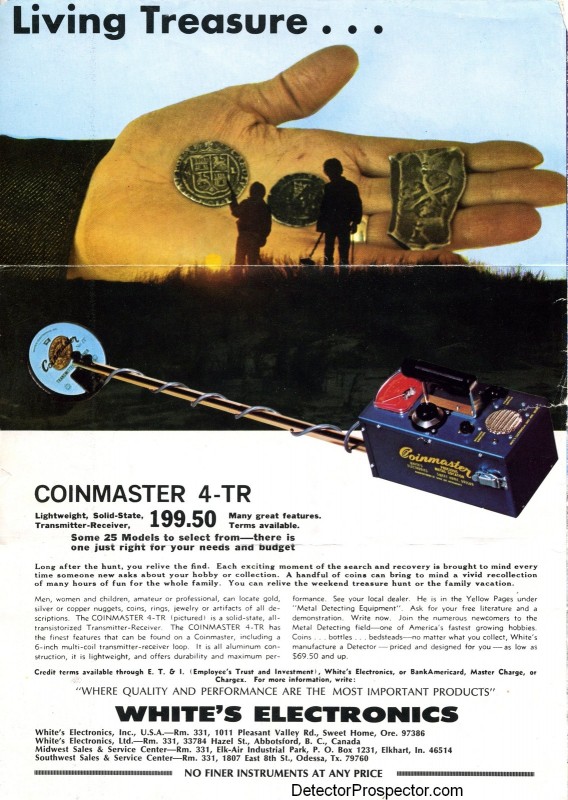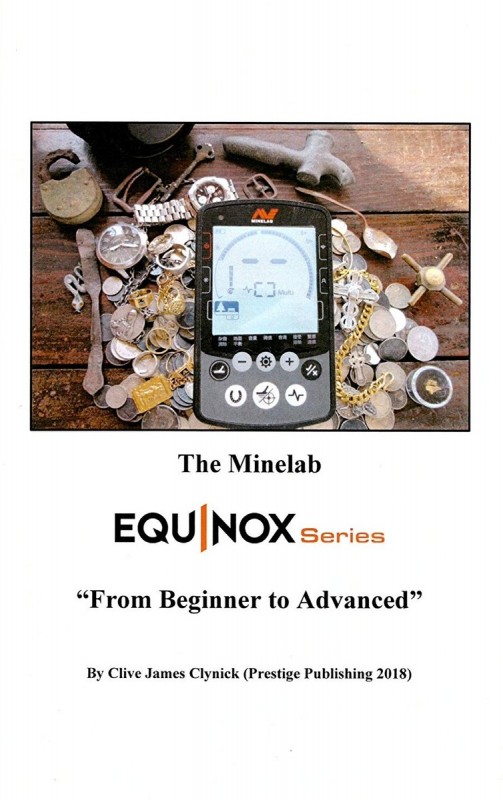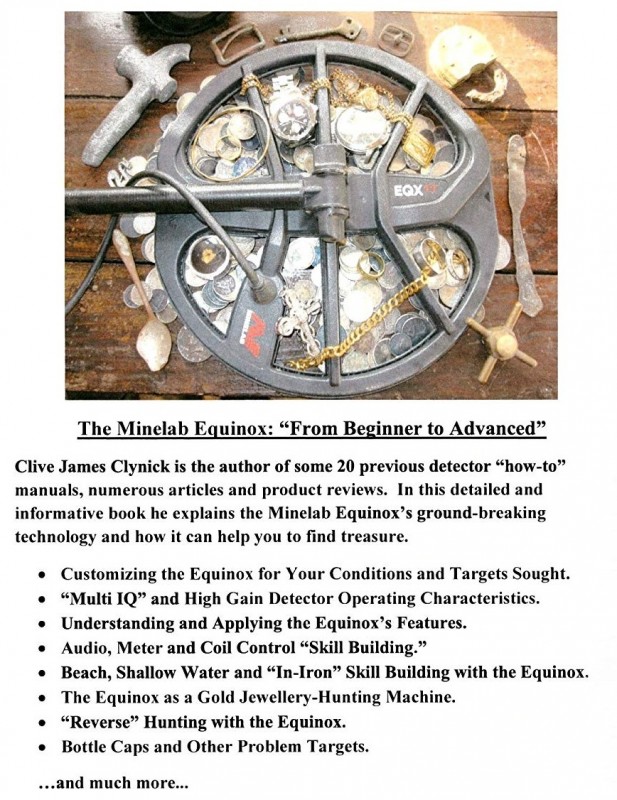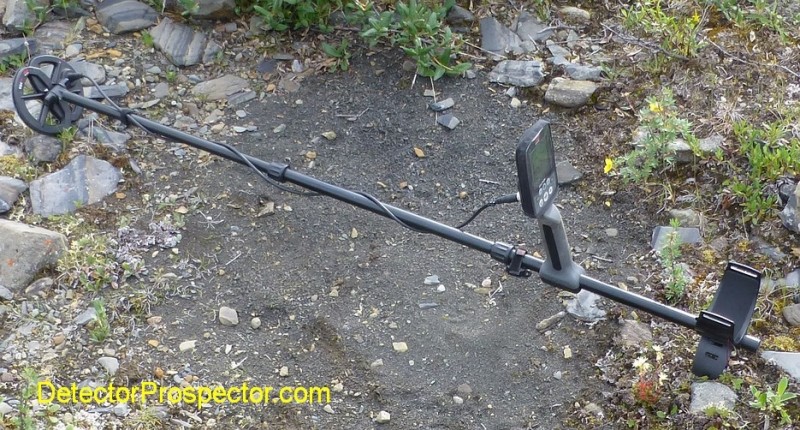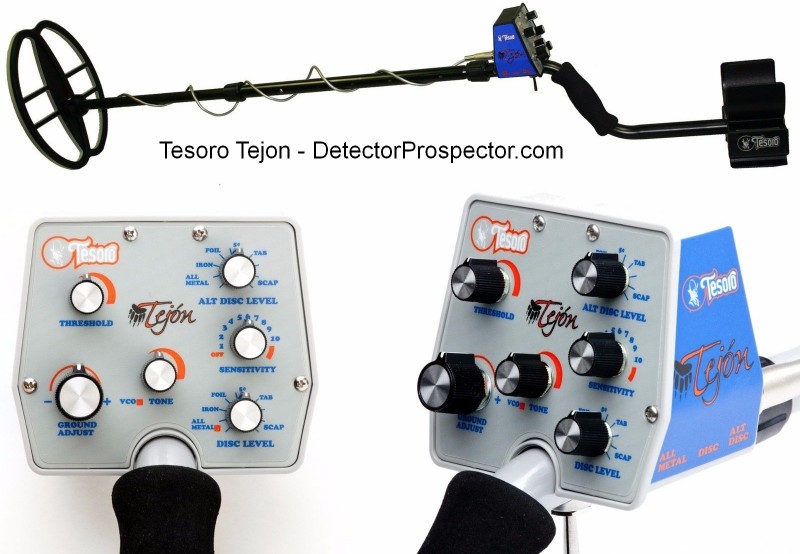-
Posts
19,726 -
Joined
-
Days Won
1,568
Content Type
Forums
Detector Prospector Home
Detector Database
Downloads
Everything posted by Steve Herschbach
-

The 600 Sniffs Out Some Stuff At A New Permission
Steve Herschbach replied to Dan(NM)'s topic in Minelab Equinox Forum
You are slaying the coins Dan! I spent some time beating the 600 drum because I am convinced that it is the true killer bargain. People keep comparing the Equinox models to detectors costing two or three times more money. That’s not how people shop - most people have a budget they want to stick with. And for under $600 with some shopping nothing else comes close to matching the 600 both for features and performance. The 800 gets all the attention but in my mind the 600 is the the one that really wows me. Anyone looking for a new full warranty detector under $600 the Equinox 600 is definitely the one to beat. It’s hard for me to understand why anyone would consider anything else in that price range. -
This is just a short video clip showing the AT Max in highly mineralized red dirt, on a "live dug" Civil War bullet. Settings were Custom (so that the machine saves the settings) but basically, Pro Zero mode with Iron Disc at 10. The search coil used is the CORS Strike 12" x 13" DD coil (same as NEL Tornado). Published on Nov 16, 2017
-

Why Choose Multi Kruzer Over Nox?
Steve Herschbach replied to Johnnysalami1957's topic in Metal Detector Advice & Comparisons
I have several Equinox rod assemblies, and only the last one exhibited a looseness that might cause a twisting action, but in actual use it has not been twisting any more than the others. It does appear to me that it is an issue that slipped in at the part sourcing / manufacturing level and so could not be caught at the prototyping stage. I would ask Minelab to replace the rod for you since it is a known problem. I have not used the Multi Kruzer but do have a Gold Kruzer. I can't say I have a preference for either straight rods or S rods. I have used both types and been just fine. I have also had examples of both types that I did not like. The hand grip makes more difference to me, since I do not have large hands. I prefer a smaller grip, with the Fisher F75 defining what my hand thinks is perfection. I also like the grip on the Kruzer more than the Equinox for the same reason. The Equinox grip is just ever so slightly larger in diameter than my hand likes. I have gotten used to it with time however. From an operational perspective the Kruzer models have more of what I think of as a traditional threshold based all metal mode. The Gold Mode on the Equinox is not quite the same thing - more like a digital disc mode simulating an all metal mode. The difference is subtle but I am sure anyone used to running in a true threshold based all metal mode (nugget hunters in particular) would notice the difference. One thing I am learning is just how resistant many detectorists are to learning new tricks. I have quite a bit of faith in the prospecting capability of the Equinox, but have been purposefully staying relatively quiet on the subject. Why? Because of the difference in how the Equinox works and acts in Gold Mode as opposed to what most people would expect when running an "all metal" mode. The Gold Kruzer and I am sure the other Kruzer models in all metal mode feel and behave very much like a Gold Bug 2 or Gold Bug Pro (and numerous other prospecting machines) in all metal mode. The difference is mostly heard/felt as the way the threshold connects with both a target and the ground when ramping up and down. The Kruzer models have the standard smooth connection between threshold, ground, and target, with a equally distributed ramp up and down in the threshold. With the Equinox it is almost all on the ramp down side with very little ramping up in the signal. Again, the effect can be subtle, but is more easily heard at low recovery speeds. Still, having said all that, I have ditched all my other VLF nugget machines in favor of the Equinox. I do believe in leveraging new technology to my advantage as quickly as possible, and I am absolutely convinced that Multi-IQ outperforms single frequency on almost every level. Ironically my main use for single frequencies is to mellow the Equinox out and make it less reactive in bad ground. There honesty is just nothing for me to learn any more regarding typical single frequency all metal modes, and so I am finding some pleasure in discovering just what Multi-IQ can and can't do for me. Sorry for the long dissertation on all metal performance. Many people would not care about that, but it is an area where Equinox and Kruzer part ways. Anyone wanting that good old threshold based all metal mode will be at home with the Kruzer models. The Equinox Gold Mode is a mode that has no real parallel on any other detector and is more for somebody ready to try something new in the way of "all metal" modes. -

Gold Mode 1 Versus 2 Very Interesting
Steve Herschbach replied to Bhogg's topic in Minelab Equinox Forum
The forum currently does not allow for videos to be uploaded directly - you have to use a video hosting site like YouTube then post the link on the forum. Does not matter - we believe you. The question is what is up? There is no difference between Gold Mode 1 and Gold Mode 2 except that Gold Mode 2 has a slower Recovery Speed. This allows for more depth in lower mineral ground but it also accentuates false signals from the coil touching items at high sensitivity levels. You need more care with coil control and will generally need to move slower in Gold Mode 2. That being the case Gold Mode 2 should detect anything you can find in Gold Mode 1. If anything Gold Mode 1 is slightly less sensitive due to the faster Recovery Speed setting. First thing I would do is a factory reset, then test again. Hit the Horseshoe button in both modes so that you have no discrimination engaged. Turn off ground tracking before testing any nuggets, as nuggets might track out. It is always best to use manual ground balance when testing, and be sure both modes have the same ground balance number. My guess here is that tracking has caused one mode to get significantly out of whack. If you want, increase Recovery Speed in Gold Mode 2 to 6, at which point the settings will be identical in both modes. Or lower the setting in Gold Mode 1 - whichever. -

Eqx 06 Coil Review For Gold Prospecting
Steve Herschbach replied to Lunk's topic in Minelab Equinox Forum
The 6" coil is a winner for sure. Thanks for the report Lunk! Paul, the 11" works fine. There is nothing wrong using a sensitivity setting of 12. An Equinox with the sensitivity set so that the machine is stable will outperform some other units that run stable at full sensitivity levels. Just because a sensitivity setting is at 50% of max does not mean the machine is getting half the performance of other machines running full out. It just means they have a lower gain level to start with. Personally even with the small coil I prefer stable settings. The last location where I worked the Equinox I was able to scrub the ground just like running a Gold Bug 2 while in Gold Mode and sensitivity set at 18. Once on the gold I may go higher, but don't be surprised if hot rocks pop and coil knock sensitivity increases at higher sensitivity levels. -

Why Choose Multi Kruzer Over Nox?
Steve Herschbach replied to Johnnysalami1957's topic in Metal Detector Advice & Comparisons
Well, a person might prefer how the Multi Kruzer feels on their arm, the menu layout, or how the audio sounds compared to the Equinox. These are strictly personal preference things but they do matter to people. Some people just hate Minelab. May not make sense but it is real. From my perspective the only real functional difference I can point out is the Kruzer having a superior coil selection, one that includes a concentric coil. Some people really like concentric coils and so that alone could be a factor. I personally have the Equinox. I do hunt saltwater beaches at least a little every year, and there is no way any single frequency detector is going to match multifrequency for saltwater use. That one factor alone is what makes the decision for me. If I had to choose something else to replace the Equinox however the Multi Kruzer would be it. I like the look of the new Deus X35 setup but ultimately I do prefer a waterproof detector and detectors with affordable accessory coils so for me the Multi Kruzer would be the better option compared to the Deus X35. I have to admit that having the Equinox now has brought calm to my detector life. I still look at other new models when they appear, but for once feel content that I have all I need when it comes to one detector that can do everything well. Makro Multi Kruzer and Minelab Equinox metal detectors -

Equinox Water Hunt Finds
Steve Herschbach replied to Mark Gillespie's topic in Metal Detecting For Jewelry
Hi Gene, I am going to hope the career move ends up as a positive for you. Welcome to the forum.... and the “dark side”. I have taken a liking to the 800 also. -

Any Good Advice For Southern Oregon?
Steve Herschbach replied to Creekboy's topic in Detector Prospector Forum
I have never prospected in Oregon so can’t help you directly. However, to get started here are some locations: Oregon Gold Placers Most of these areas will have mining claims or land management restrictions. A good place to start learning about these is: MyLandMatters.org Finally, here is an article describing how I go about looking for gold, with New Mexico used as an example: Determining Where To Prospect For Gold Nuggets? I hope this helps get you started. -
If you mean upload a video directly to the forum... it won’t work. Currently you are limited to: Accepted file types jpg, jpeg, png, gif, bmp, tif, doc, docx, pdf, txt, rtf, xls, xlsx, gpx, kml, kmz, zip · Max file size 63MB To post a video you need to upload it to YouTube or some other video hosting service, then post the link here.
-

New Whites TDI Beach Hunter
Steve Herschbach replied to auminesweeper's topic in White's Metal Detectors
-
I have seen gold read anywhere from in the ferrous range all the way up to where an aluminum can reads. In other words, over nearly the entire target id scale, from smallest to largest. The sweet spot for women's rings is below U.S. nickel in the foil range and definitely not a range to exclude. The sweet spot for men's rings is above U.S. nickel where most large pull tabs read. The immediate nickel range is actually a weak spot for gold rings, too high for most women's rings, and too low for most men's rings. That is not to say rings do not appear in the nickel range, just that it is not a hot range for gold rings. Target ID / VDI Numbers For Gold Nuggets And Gold Jewelry There is no way anyone will break me from associating U.S. nickels with gold. I use it as a reference point when jewelry detecting exactly because of where a nickel reading relates both to men's and women's rings. For nugget detecting a U.S. nickel provides an excellent reference point for detector performance comparisons by being a standard and easily obtainable item that falls squarely where one would expect nuggets weighing several grams to appear. Therefore just like a dime being a reference for people hunting silver, a nickel provides a standard reference for people hunting gold. The metal/alloy mix makes no difference - all that matters is the size and target id number. Detectors know nothing about metals and alloys, and anything that reads just like a nickel, whether it is a pull tab beavertail, eraser holder, lead bullet, or gold nugget is all the same as far as the detector is concerned. Gold nuggets are an alloy also, the most common metal in a nugget after silver being copper. My standard references are ferrous, nickel, and zinc penny which act to divide the target id range into three useful "zones": Ferrous Small gold nuggets, necklaces, ear rings, women's rings (and tons of small aluminum trash) U.S. nickel Men's gold rings, larger gold nuggets (pull tabs, larger aluminum trash) Zinc penny Silver and copper coins, silver jewlery For small gold items including women's rings I will concentrate on the zone between ferrous and nickel. For larger gold jewelry I focus on the range between nickel and zinc penny. For silver and copper coins it is anything above zinc penny. This is quick and dirty but with any detector tell me where ferrous, nickel, and zinc penny read, and I can figure out all the rest.
-
People often forget about factory reset functions since it is still a rare feature. I am a proponent of resetting newer generation digital metal detectors on a regular basis, especially if settings get changed around a lot. The more setting changes are made, the more chance of a programming bug slipping in and messing with the operator. This is the procedure for the many F75 variants out there. From the F75 Owner's Manual page 10: RESET function The F75’s microprocessor saves all settings which you input, even after the power is turned off. If you wish to reset the settings to the factory preset, follow this process: Turn detector off. Press-and-hold the red MENU button and push-forward-and-hold the TOGGLE SWITCH. Turn the detector on, while you are still holding the controls. Release the MENU button and TOGGLE SWITCH. See the F symbol. When the F disappears, the detector is reset. Note: some latest F75 versions may show five pairs of number instead before displaying the F - the ten digit serial number. All settings have now been returned to factory defaults. Fisher F75 Metal Detector
-
Sounds like a really great project. The possibility you are one of the only people in existence that can give this early (first?) communication system a real life test makes it all the more exciting. Thank you for anything you share on the subject.
-

I Had A Great Day With The Nox 600 Today
Steve Herschbach replied to Dan(NM)'s topic in Minelab Equinox Forum
I guess you had a great day - hard to do better than that!! -

Do You Remember Your Old Detectors?
Steve Herschbach replied to geof_junk's topic in Detector Prospector Forum
November 25, 1972 I sent a letter to my mom. I was 14 years old and just got my first metal detector and mailed a copy of the ad with the letter. My mom gave me the letter and ad back recently... My first detector in 1972 - a White's Coinmaster 4 TR for $199.50 (a lot of money then, especially for a 14 year old!).... And from the letter, my very first detecting report... "I went hunting at Goose Lake and Elderberry Park for coins. I only went hunting five times and I've found: One 1964 silver quarter, seven silver dimes, including one 1936 mercury dime, four ordinary dimes, six nickels including one 1943 and one 1944 silver nickels from during the war, thirty pennies, the oldest a 1946, two bullet shells and one bullet, some parts of necklaces, and 10 billion pop can lids, gum wrappers, etc." No discrimination yet in 1972, and aluminum was already showing up in quantity. Only a couple inches of depth, but as one of the first guys on the ground with a detector locally it was easier to find silver in those days then it is now. I also mention in the letter I am saving up to buy my first gold dredge, a 3" Keene with no floats, for $379 new plus shipping. So my first detector in 1972 followed by my first gold dredge in 1973. -
The Minelab Equinox Series "From Beginner to Advanced" by Clive Clynick is the first book available about the new Minelab Equinox metal detectors. The 8.5" x 5.5" format book is 111 pages of densely packed information that is intended to help new Minelab Equinox owners get the best out of their new detectors. The early part of the book relies of screen shots to illustrate the various controls on the detector, and then switches to hand drawn pictures to illustrate various concepts described in the book. In this day and age of slick graphics the hand drawn images lend a "homemade" feeling to these books. That is indeed probably the case since the book is in the "fold and staple spine" format favored by those printing books at home. I can't really fault Clive for using the hand drawn images however. A picture does often easily get across some idea that might be very difficult to describe in writing. I personally can sketch out a useful image quite easily, but turning that sketch onto a slick computer generated diagram can be time consuming. In the end the hand drawn sketches get the idea across, and that is what matters most. The first roughly 40 pages of the book basically go over the controls, adding some details not found in the owner's' manual. The real meat is in the last 70 pages of the book. Clive goes into great detail emphasizing important details about the Minelab Equinox meter and audio characteristics. There is a lot of information here about how to use the Equinox features along with good handling skills to get the best performance possible out of the Equinox. The book has an emphasis on coin and jewelry detecting both on dry land and beach. I therefore think the book will be of most use to people looking for information more specific to these subjects. Information specific to relic detecting or nugget hunting in particular is more in passing while discussing coin and jewelry detecting. Much of the information presented does assume basic detecting knowledge along with basic knowledge from the Equinox owner's manual. Clive tries to avoid repeating information already found in the owner's manual, and so from this perspective I would rate this book as being applicable for detectorists with moderate to advanced detecting skills. People who are totally new to detecting may feel in a bit over their heads initially. That is fine because any detecting book worth having usually needs more than one reading. Things that do not sink in at first make more sense after getting some hours of experience before they "click". The book may be challenging for true beginners on the first go, but that is because there is meat here to satisfy more advanced operators. Anyone that perseveres with fully understanding the information in this book will no longer be a beginner, and the good thing is the skills learned will apply to many other high performance metal detectors. The bottom line is I recommend this book for people looking for information that goes far beyond what is offered in the Equinox Owner's Manual, and which is of primary interest to coin and jewelry hunters. Clive is an accomplished writer with several titles to his credit that qualify as "classics", especially as regards jewelry detecting. Visit his website at http://www.clivesgoldpage.com/ to see all the titles he currently has available.
-

My First Equinox Gold Nuggets
Steve Herschbach replied to Steve Herschbach's topic in Minelab Equinox Forum
I have been acquainted with the Equinox longer than most people and so I am not sure it is a fair question since some would say I helped create the hype! Nothing in my opinion about the Equinox has changed since February except that I have more respect for it than ever. The Equinox has replaced all my "in use" detectors except my GPZ 7000. -
Published on Aug 15, 2018 - The X35 coil is the latest edition to the XP Deus metal detector range - It offers the detectorist 35 frequencies and better stability plus a new boost mode for deep targets.
-
Current Tesoro Metal Detector Models and Pricing* August 2018 Tesoro Compadre - 12 kHz, 5.75" round concentric coil, single 9V, 2.2 lbs, $160.65 Tesoro Mojave - 12 khz, 7" round concentric coil, single 9V, 2.2 lbs, $251.10 Tesoro Silver uMax - 10.6 khz, 8" round concentric coil, single 9V, 2.3 lbs, $254.15 Tesoro Cibola - 14.5 khz, 9" x 8" concentric coil, single 9V, 2.5 lbs, $369.75 Tesoro Vaquero - 14.5 khz, 9" x 8" concentric coil, single 9V, 2.5 lbs, $454.75 Tesoro DeLeon - 10 khz, 9" x 8" concentric coil, eight AA, 3.0 lbs, $509.15 Tesoro Outlaw - 10.6 khz, three coils, single 9V, 2.2 lbs, $551.65 Tesoro Sand Shark - Pulse Induction, 10" round coil, eight AA, 5.4 lbs, $577.15 Tesoro Tejon - 17.5 kHz, 9" x 8" concentric coil, eight AA, 3.0 lbs, $602.65 Tesoro Tiger Shark - 12.5 khz, 10" round concentric coil, eight AA, 5.4 lbs, $636.65 Tesoro Lobo ST - 17.8 kHz, 10" x 6" DD coil, eight AA, 3.5 lbs, $679.15 Tesoro Cortes - 10 khz, 9" x 8" concentric coil, eight AA, 3.0 lbs, $721.65 *Lowest price in U.S. dollars as normally advertised on the internet Tesoro Metal Detector Catalog (latest 2013 issue) Tesoro Mojave (new for 2017)
-

Why Are Some DD Coils As Big As Hula Hoops?
Steve Herschbach replied to Ridge Runner's topic in Detector Prospector Forum
The coil with the larger surface area generally gets more depth, all other factors being equal. Both length and width matter, not just length as you seem to be implying. A round 10” DD is normally going to get more depth than a 6” x 10” DD. Tech notes - About Searchcoils by Dave Johnson and Coil Basics by Carl Moreland

